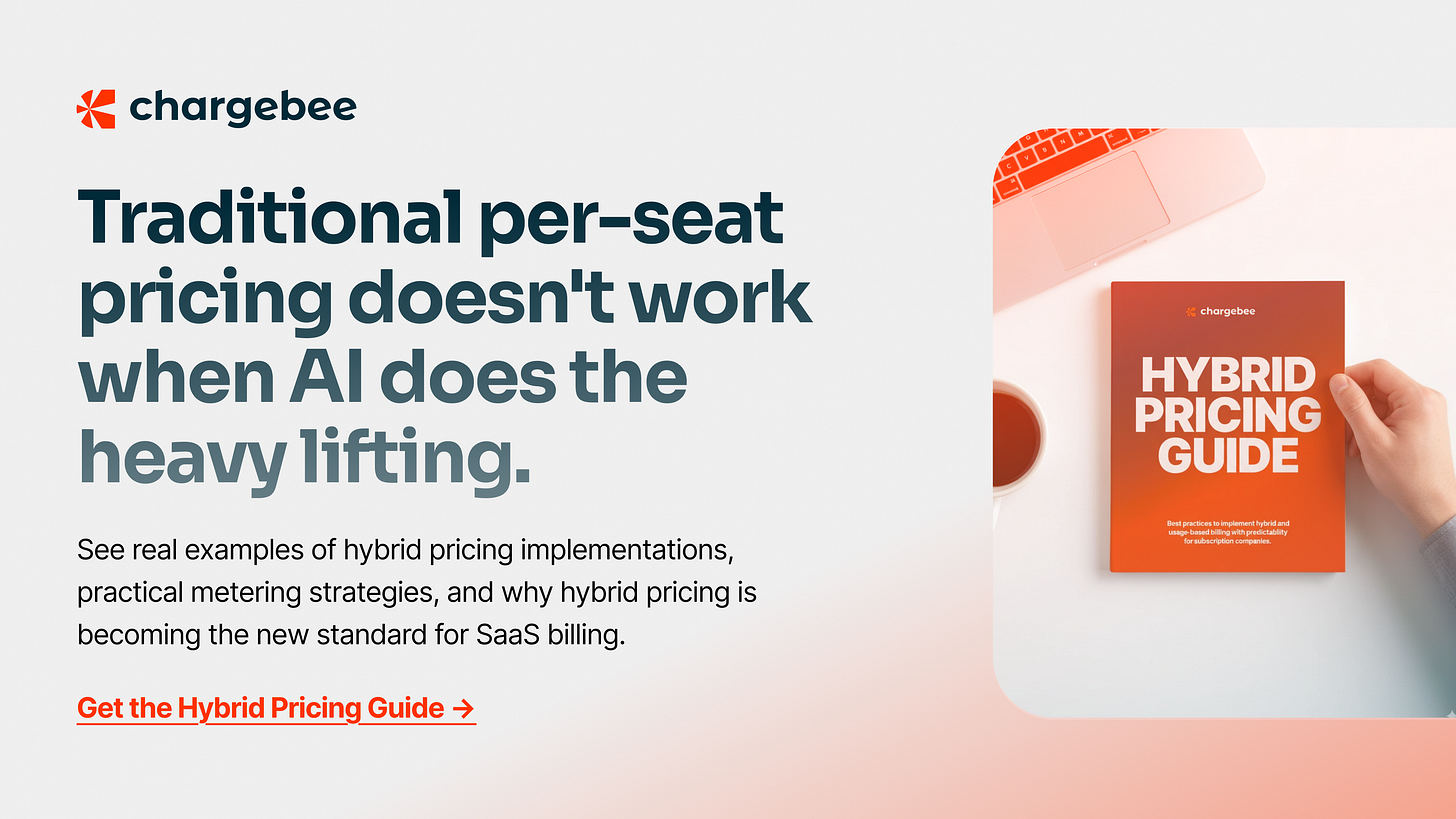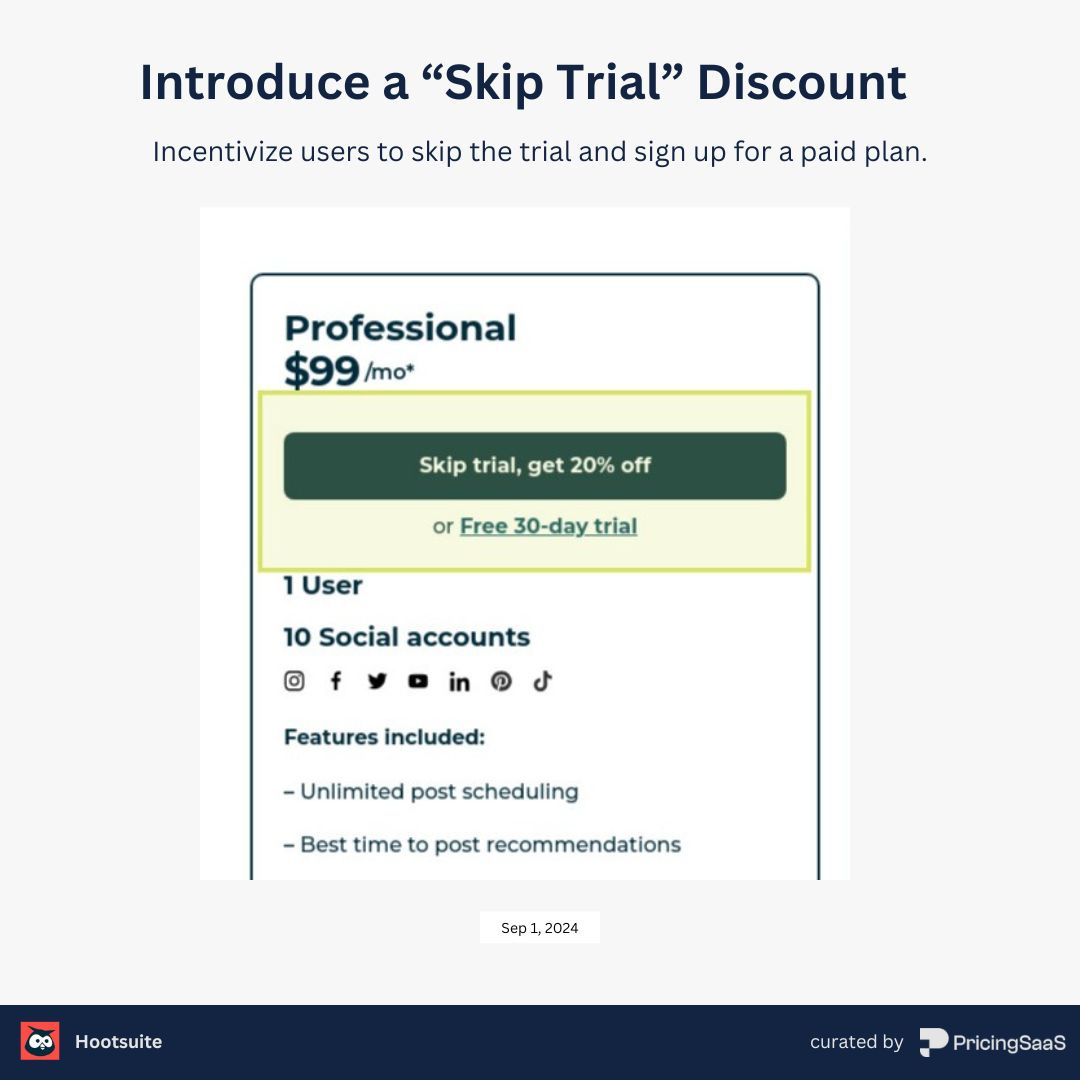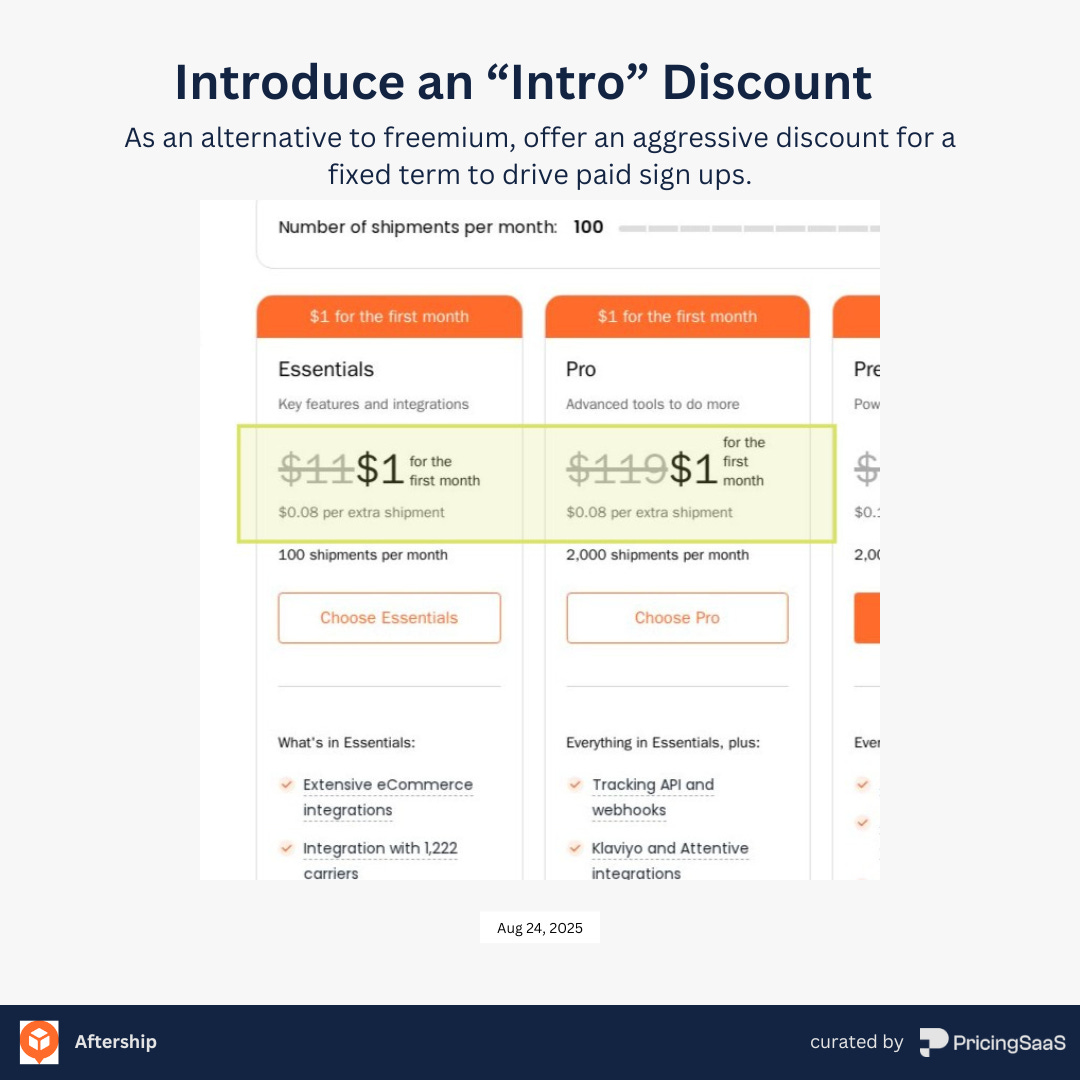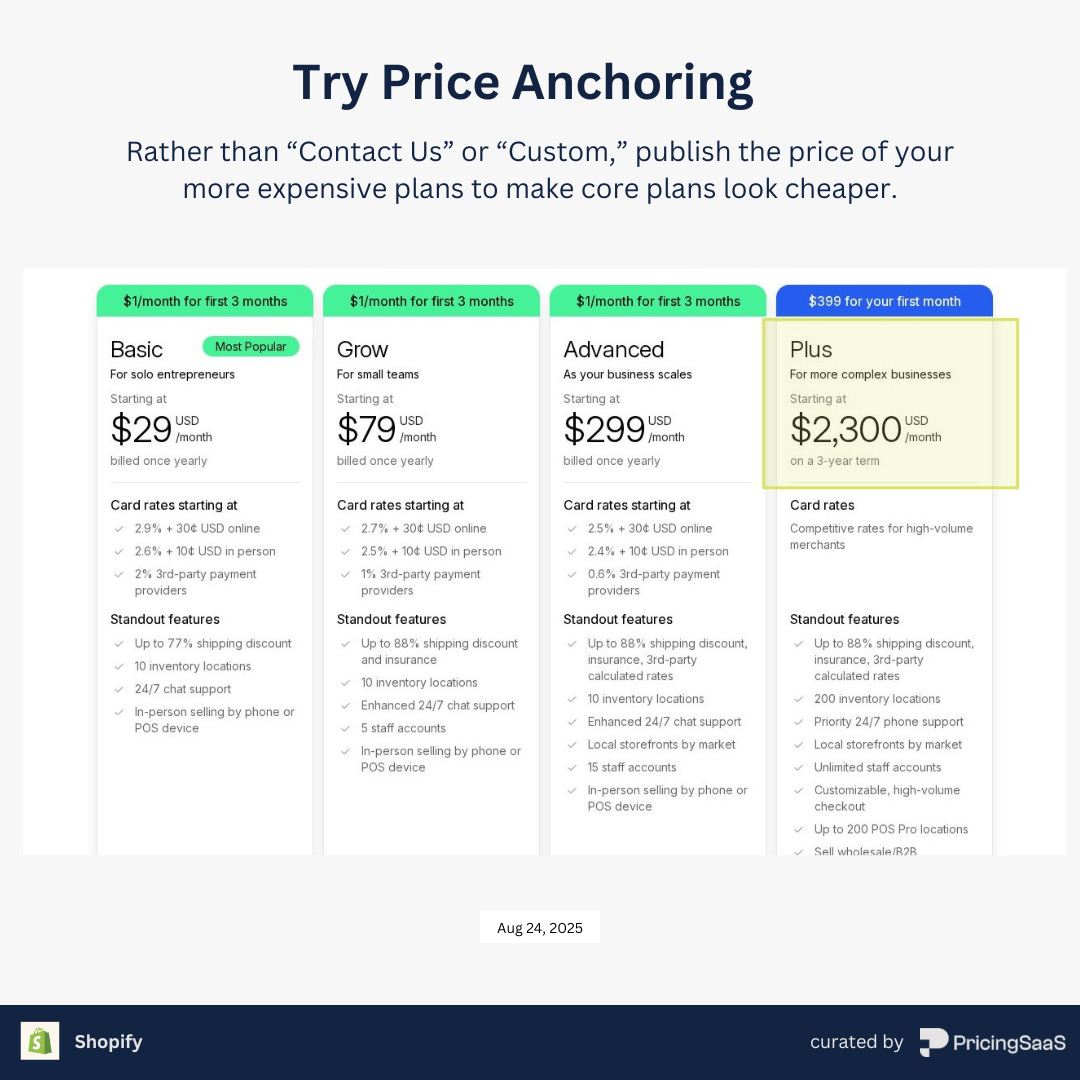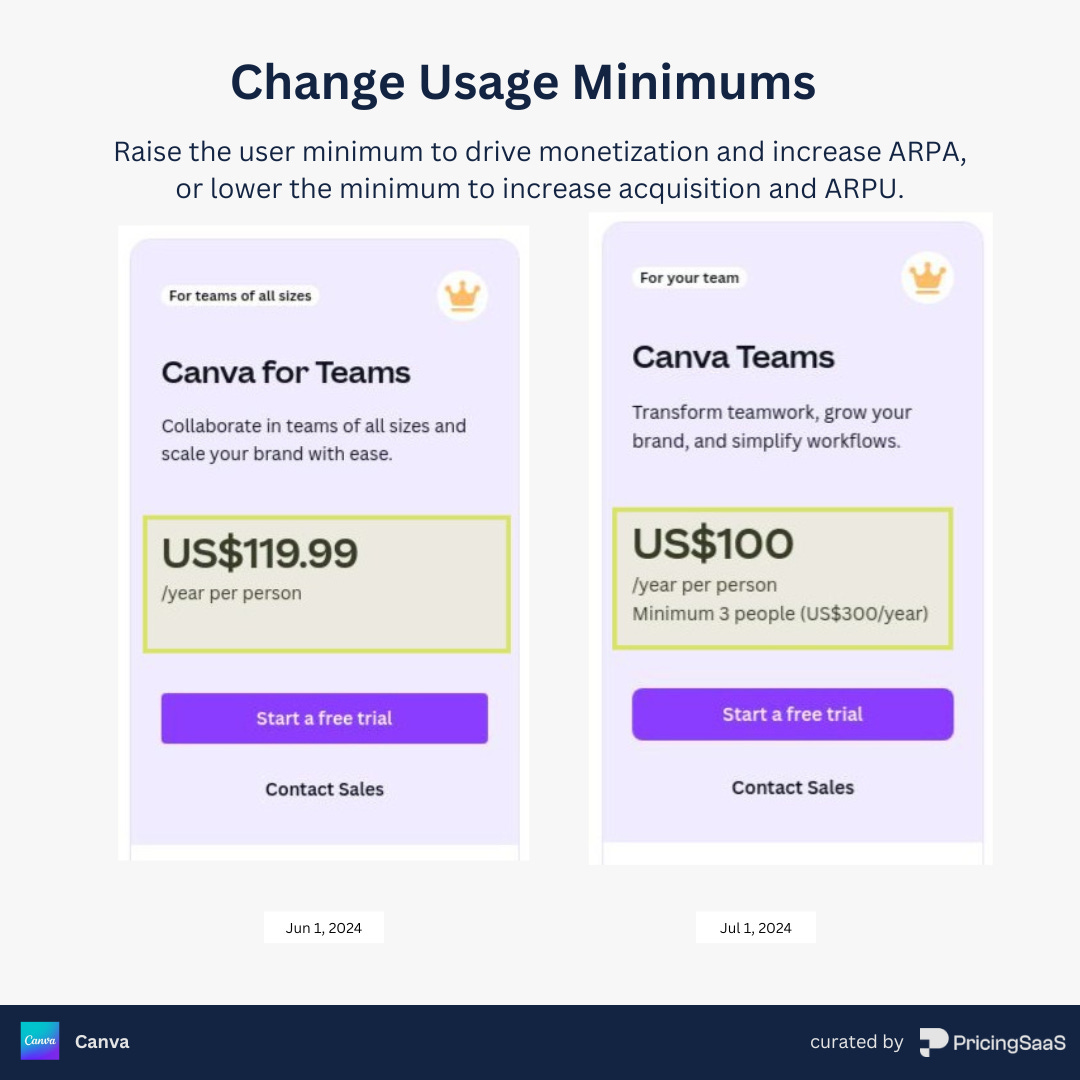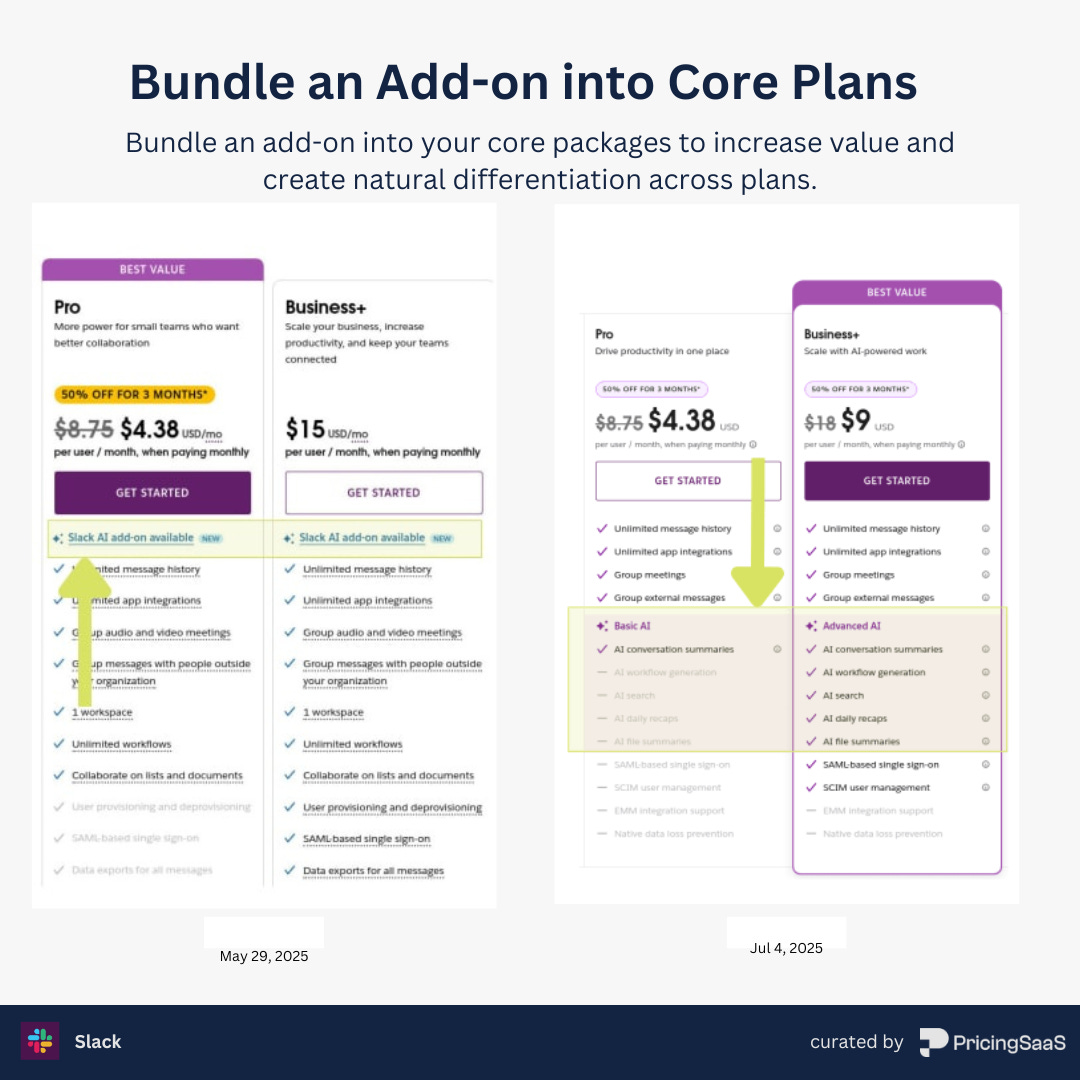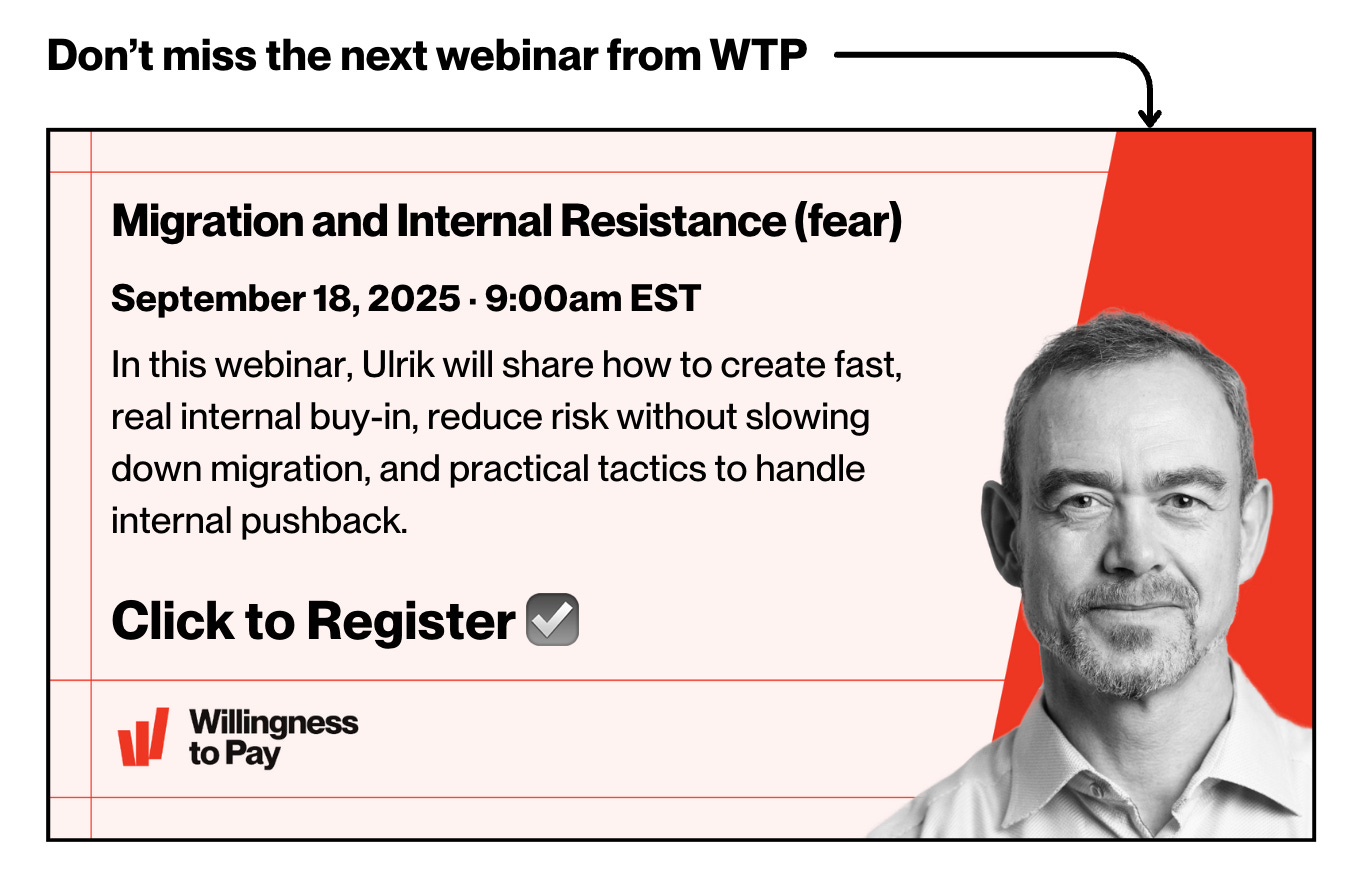5 pricing experiments you can run today
Plus: Join Ulrik's next webinar on Migrations and Internal Resistance.
Pricing strategy feels both exciting and terrifying right now.
Every company we talk to is considering a dramatic overhaul of their model — and with good reason. Structural changes are coming as companies move from inputs towards outcomes.
As if that shift wasn’t enough, the underlying costs of AI are getting increasingly complex. While “per token” costs are declining, advanced workflows are consuming more tokens, raising the overall cost.
To put numbers behind it, Ivan Zhao, CEO of Notion, told the WSJ that their margins dipped from 90% to 80%, with that 10% going straight to the LLMs.
Stories like these raise the stakes of a pricing change, and it’s no wonder SaaS leaders have pricing paralysis.
Thankfully, not every pricing change needs to be an overhaul. Over the past few years, we've observed thousands of pricing changes across the SaaS landscape.
Watching the best players launch experiments and introduce new pricing elements, there’s a timeless truth that still holds up:
Small changes can lead to massive wins.
This week, we curated a short list of our favorites experiments and packaged them up into a simple swipe file that you can steal to get unstuck.
We’ve shared 5 of them below, but be sure to grab the full swipe file here.
Today’s Post is brought to you by Chargebee
When one AI tool can replace multiple team members, charging per user seat no longer makes sense, but most SaaS companies haven't adapted their pricing yet.
Chargebee's guide shows how successful companies are combining fixed subscriptions with usage-based charges to better match what customers actually use. See real examples of hybrid pricing implementations, practical metering strategies, and why this approach is becoming the new standard for SaaS billing.
🔬 5 Pricing Experiments you can run today
1. The “Skip Trial” Discount (Free-to-Paid Conversion)
Hootsuite offered users 20% off the Professional plan if they opted to skip the free trial and commit immediately. In general, you can categorize trial users in two buckets:
Those that truly need a successful trial experience to push them to purchase.
Those that plan on purchasing, but use the trial to de-risk the decision.
This experiment doesn’t do much for the first group, but it shortens the sales cycle for the second group, de-risking the decision by offering a lower price.
Note: Hootsuite still offers this, but with a 10% discount.
2. Intro Discount Strategy (Freemium Alternative)
Aftership still offers a free trial, but it’s clearly deprioritized on the pricing page. The intro discount is a move that other big SaaS players have used, including Shopify and Slack, where new customers get an extreme discount for a fixed period of time (usually 1-month or 3-months).
The intro discount helps remove a big psychological hurdle — getting a customer to pull out the credit card. This drives immediate revenue recognition (even if its minuscule) while lowering the barrier to retain that customer after the initial period.
Additionally, pulling out a credit card (even if it’s to pay $1) shows more intent than a free trial or Freemium signup and allows CS/Support teams to prioritize these users to ensure they have a positive experience.
3. Price Anchoring (Monetization Lever)
Price Anchoring is one of the oldest psychological tricks in the book.
Shopify introduced a price point for the Plus plan and quickly made the core plans look much cheaper. While smaller businesses may never be a fit for Plus, publishing its price point plants the seed that some companies are paying 10x the cost of the Advanced plan. It also allows Shopify to tout price transparency, which is a hot topic, and makes them look more customer-friendly.
It’s surprising so few companies do this. It’s possible to do without giving the exact price point, too. Using “Starts at” language gives customers a ballpark, and allows you to benefit from anchoring, while retaining flexibility on the final price.
4. Usage Minimum Adjustments (ARPU Optimization)
Canva removed "teams of all sizes" language and implemented a 3-person minimum on their Teams plan. They’ve held it for over a year, so it seems like it’s working. This is a simple way to increase ARPA at the expense of ARPU.
User minimums aren’t for everyone, but in Canva’s case it makes sense. They’re often dealing with price sensitive customers that look for workarounds to avoid paying for additional users (I’m one of them). Customers benefit from a per-user discount on the upgraded plan, which includes collaboration and other features.
5. Bundle an Add-On into Core Plans
This one will definitely take more than a day, but it’s still a lower lift than revamping an entire model. Slack took it’s AI Add-On and bundled it into its core plans, using strategic differentiation between Pro and Business+ to use AI as a value driver.
This is a smart move and will get way more people using their AI features, which will increase usage and make Slack even stickier. This could also lead to an in-plan credit model to drive additional expansion if Slack wants to go that route.
Why Small Changes Work
In general, these experiments share a few common characteristics that make them effective:
Low Implementation Risk: Generally, each experiment can be reversed quickly if results don't meet expectations.
Clear Success Metrics: Whether it's paid conversion rate, ARPA, or trial-to-paid percentage, each experiment has obvious measurement criteria.
Psychological Foundation: Each experiment leverages behavioral economics principles rather than relying purely on rational price/value calculations.
Customer Experience Focus: The best experiments improve the buying experience rather than just optimizing company metrics.
Small experiments can be especially powerful because there’s often compounding value beyond the main goal.
For example, Shopify's price anchoring experiment doesn’t just influence conversion, it provides data on price sensitivity that informs the next experiment.
If you're feeling overwhelmed by pricing in the AI era, start small.
Pick an experiment that aligns with your current growth priority. The goal isn't to avoid a larger pricing evolution, it's to build confidence and capability through tactical wins while you plan your next bigger, strategic move.
Get the complete Pricing Experiments Swipe File with detailed examples and implementation guides →
Thanks for reading! When you’re ready, here’s how we can help:
PricingSaaS Community: Join the free PricingSaaS Community to get quick answers from experts, real-time pricing data, and access to exclusive events.
PricingSaaS Index: Check out the PricingSaaS Index to track competitors, scroll pricing histories, and create a swipe file of pricing pages for inspiration.
Free Advisory Session: Need a sounding board? Book a 30-minute session. No sales pitch. We’ll provide honest feedback and steer you in the right direction.



